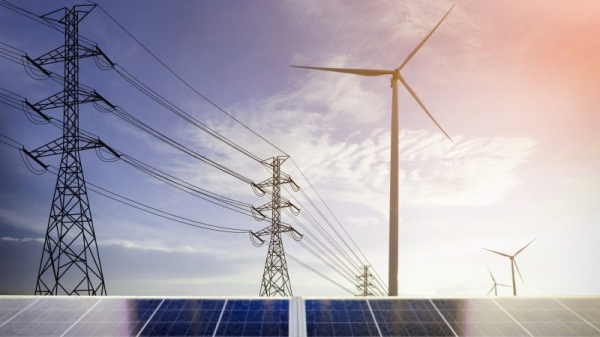Why the EU’s power grids need higher renewable energy targets

Adopting a 45% renewable energy target can help align grid infrastructure with fast-expanding clean technology markets, ensuring the EU’s transition away from costly fossil fuels doesn’t lose speed, argue Elisabeth Cremona, Antonella Battaglini, and Andrzej Ceglarz.
2022 was a record year for clean energy deployment in Europe. It’s likely the first of many: industry bodies predict that clean technology growth will continue accelerating.
Research by Ember revealed that the projected installation rate of key clean technologies will far outpace expectations of the Fit-for-55 package, putting the EU on course to reach at least 45% renewable energy by 2030.
This reflects the new urgency to shed fossil fuels in Europe since the start of the energy crisis and Russia’s invasion of Ukraine.
But to deliver the momentum on clean technologies set in motion by markets, industry and national policies, the EU will need realistic plans for infrastructure to keep pace. One crucial part of this is electricity grids.
The stratospheric growth of technologies like heat pumps, electric vehicles, and solar and wind is good news for the energy transition and Europe’s resilience in the face of energy crises.
An electrified system backed up by renewable energy is the most efficient and cost-effective means to optimise the energy system, replace fossil fuel consumption and deliver vital cuts to greenhouse gases.
Reducing Europe’s dependency on fossil fuels will also aid in cutting off Russian gas for good.
Electricity grids will underpin this economy-wide shift. Electricity grids at all voltage levels, national and cross-border, enable the integration of renewable energy sources.
They determine the amount of renewable electricity and clean energy solutions, such as flexibility services, can come online. As such, their deployment defines the pace and success of Europe’s energy transition.
It is, therefore, critical that grid planning happens in parallel with the broader energy transition: reflecting the speed of technology deployment, supporting the delivery of targets, and accommodating innovation, including on the demand side.
Despite their essential role, deployment of electricity grids is lagging, with investments falling short of what is needed by 2030 and beyond. This risks stymying the pace of the energy transition in Europe.
Strides have been made to address the long lead times for permitting and constructing power lines and accompanying infrastructure, with grids included in the revised EU emergency permitting rules.
But additional, stronger action is needed, and the imminent decision on the EU’s renewable energy targets presents a crucial opportunity.
An EU commitment to at least 45% renewables by 2030 would boost grid investments.
Grid investment plans are generally a bottom-up exercise based on politically agreed targets and, therefore, regularly insufficient for both current and expected levels of clean power deployment and system demands.
Indeed, the European Scientific Advisory Board on Climate Change concluded that the current approach to grid infrastructure planning does not consider the transformational changes that lie ahead and are necessary to meet existing 2030 and 2050 climate objectives.
It is already evident that a less ambitious EU target would magnify this issue. The Fit-for-55 forecasts for 2030 are now severely outdated: solar capacity is expected to be double the Fit-for-55 projection, heat pumps 50% higher, and electric vehicles 30%.
This severe misalignment could seriously affect the system planning process and decisions on system needs. Infrastructure based on inadequate planning could also threaten nature and some social groups, causing further delays.
To address these shortcomings, target setting should consider supply and demand trends seriously, anticipating where the EU’s energy system is and should be heading.
With the rapid deployment of clean energy solutions poised for take-off, an EU commitment to 45% is the minimum required to update energy and climate ambitions in line with emerging trends.
Additionally, Member States should mandate energy regulators to anticipate and facilitate grid investments based on more ambitious and faster renewables deployment.
This will address the time lag between EU ambition setting and the transcription and implementation of EU targets into national laws.
It would allow grid planners to better prepare for the necessary expansion and reinforcement, considering the time needed for delivery.
In this way, national grid plans can better inform and shape European grid planning, enabling optimisation of the EU’s resources and maximising the benefits of renewable energy for the climate, environment, consumers and the economy as soon as 2030.
The EU Commission and Parliament already support increasing the renewable target from 40% to 45%, with a final decision expected this week from the Council.
In addition to the climate and cost benefits of pushing for a quicker energy transition, it would allow grid planners to adequately scale and plan the grid for where Europe’s energy sector is headed by 2030.
Anything less risks derailing the momentum of the clean technology acceleration – it means aiming for failure.



